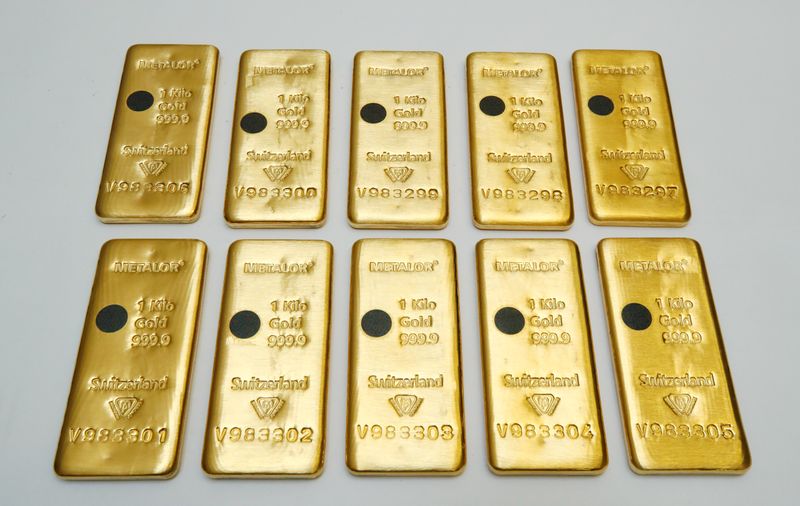By Peter Hobson
LONDON (Reuters) - Gold pushed above $1,800 an ounce on Wednesday for the first time since 2011, with analysts expecting further gains as investors stock up on an asset they expect to hold its value while the coronavirus convulses the global economy.
Spot gold prices have surged 40% in the last 14 months and are within striking distance of 2011's record high of $1,920.30 an ounce.
"We'll be challenging the $2,000 level by the end of the year," said Ross Norman, an independent analyst. "We are in a bull market for gold."
(Graphic: Gold's latest rally, https://fingfx.thomsonreuters.com/gfx/ce/jznpnzmokpl/GR%20RALLY.JPG)
Powering the rally is economic and political uncertainty caused by the COVID-19 pandemic and action by central banks, which have responded to slowing growth and the virus by slashing interest rates and flooding markets with cash.
This has fuelled fears of inflation, which would typically devalue other assets, and has also lowered returns on government bonds, making gold more attractive.
Gold's rise has been mirrored by a slide in real yields on 10-year U.S. bonds, which at around minus 0.8% are near record lows.
(Graphic: Gold vs real U.S. yields, https://fingfx.thomsonreuters.com/gfx/ce/ygdvzwaempw/GR%20YIELDS.JPG)
Financial investors, mainly in Europe and the United States, have been on an unprecedented buying spree.
Exchange-traded funds storing gold on behalf of these investors added 734 tonnes of gold worth $39.5 billion to their stockpile in first half of the year – more than in any previous full year and nearly half of all the gold mined during the period, according to the World Gold Council.
"Western investment has been the key factor supporting prices (and) there's no reason for that to stop," said StoneX analyst Rhona O'Connell.
(Graphic: Gold ETFs vs prices, https://fingfx.thomsonreuters.com/gfx/ce/gjnvwwrzjvw/GR%20ETFS.JPG)
This surge in purchases has offset a collapse in demand for gold in China and India, traditionally the largest buyers, where the bulk of gold is sold as jewellery.
(Graphic: Gold demand, https://fingfx.thomsonreuters.com/gfx/ce/oakveayrxvr/GR%20DEMAND.JPG)
A recovery in economic growth could lift jewellery sales but also cause investors to buy less, pushing prices lower, said Julius Baer analyst Carsten Menke.

HSBC said in a note it expected gold to average $1,743 an ounce this year but to fall to about $1,500 in the coming years.